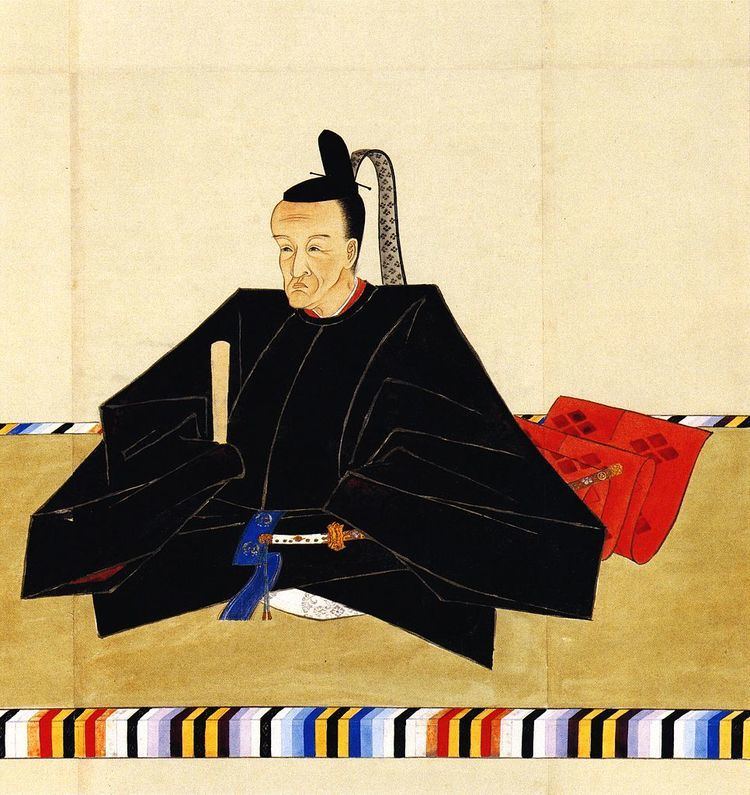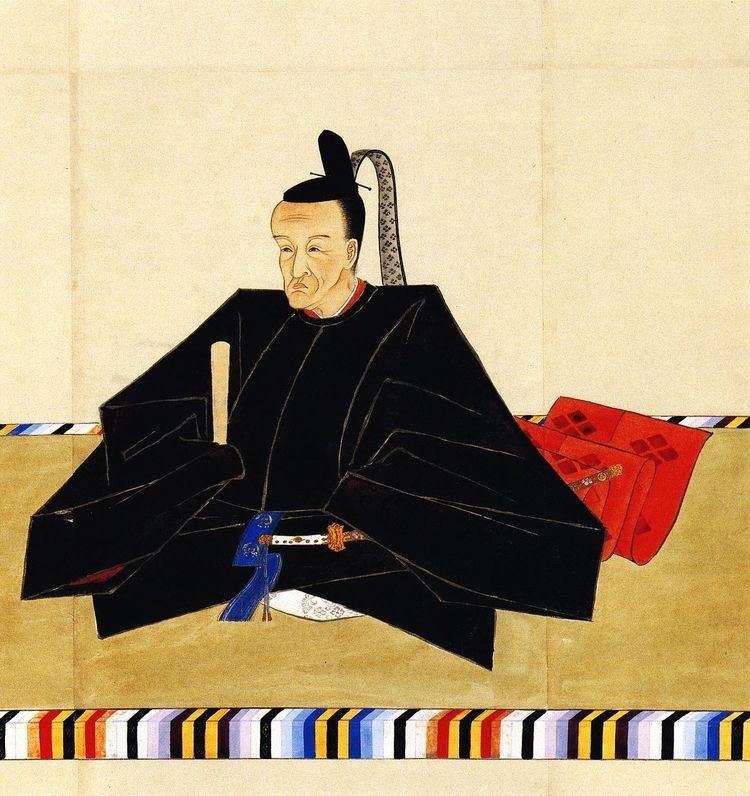Parents Tokugawa Ienari Died July 27, 1853 | Name Tokugawa Ieyoshi Children Tokugawa Iesada | |
 | ||
Monarch Emperor NinkoEmperor Komei Born 22 June 1793 ( 1793-06-22 ) Grandparents Tokugawa Harusada, O-tomi no kata Similar People Tokugawa Iesada, Tokugawa Ienari, Tenshoin, Matsudaira Naritami | ||
Tokugawa Ieyoshi (徳川 家慶, June 22, 1793 – July 27, 1853; r. 1837–1853) was the 12th shogun of the Tokugawa shogunate of Japan.
Contents

Biography
Ieyoshi was born as the second son of the 11th shogun, Tokugawa Ienari and named Teijiro (敏次郎). Teijiro was appointed heir on the death of his elder brother, Takechiyo. He became shogun on September 2, 1837, at the age of 45 upon the retirement of his father, Tokugawa Ienari. However, Ienari continued to wield much power from behind the throne, and it was not until after his death in 1841 that Senior Rōjū Mizuno Tadakuni was able to purge the government of his clique, and to implement measures to overhaul the shogunate’s finances and controls in the aftermath of the Great Tenpō Famine of 1832–36.
Known as the Tenpō Reforms, these numerous sumptuary laws attempted to stabilize the economy through a return to the frugality, simplicity and discipline that were characteristic of the early Edo period, by banning most forms of entertainment and displays of wealth. The restrictions proved extremely unpopular with the commoners.
Increasing criticism of the government’s handling of foreign affairs led to the Bansha no goku in 1839, suppressing rangaku studies.
Another part of the Reform included the Agechi-rei of 1843, which was to have daimyō in the vicinity of Edo and Ōsaka surrender their holdings for equal amounts of land elsewhere, thereby consolidating Tokugawa control over these strategically vital areas. However, this was also greatly unpopular amongst daimyō of all ranks and income levels. To complicate the situation further, in May 1844, Edo Castle burned down, and Mizuno Tadakuni was forced into exile and retirement. Mizuno was replaced by Doi Yoshitsura, Abe Masahiro and Tsutsui Masanori as rōjū. He forced the retirement of Tokugawa Nariaki in 1844 and placed Nariaki’s seventh son, Tokugawa Yoshinobu as head of the Hitotsubashi-Tokugawa house in 1847. He also forced the retirement of Shimazu Narioki in 1851.
US Commodore Matthew Perry arrived on June 3, 1853, on a mission to force a treaty opening Japan to trade. Ieyoshi died on June 22, 1853, before the treaty could be concluded, of heart failure possibly brought on by heat stroke, and was succeeded by his third son Tokugawa Iesada. The following year the Tokugawa shogunate was forced to accept the American demands by signing the Convention of Kanagawa.
Tokugawa Ieyoshi’s grave is at the Tokugawa family mausoleum at Zōjō-ji in Shiba. His buddhist name was Shintokuin.
Family
Ieyoshi's official wife was Princess Takako (1795–1840), the sixth daughter of Prince Arisugawa Orihito. She relocated to Edo Castle in 1804 when she was only age 10, and they were formally wed in 1810. In 1813, she gave birth to a son, Takechiyo, followed by a daughter in 1815 and in 1816. In addition, Ieyoshi had another 13 sons and 11 daughters by numerous concubines; however, only one son, Tokugawa Iesada, lived past the age of 20.
Events of Ieyoshi's bakufu
Eras of Ieyoshi's bakufu
The years in which Ieyoshi was shogun are more specifically identified by more than one era name or nengō.
In popular culture
Tokugawa Ieyoshi is a minor character in Stephen Sondheim's musical "Pacific Overtures", although he is not named. In a departure from history, the musical depicts him being murdered by his mother for political reasons, using poisoned chrysanthemum tea.
He is also a minor character in the first two Nemuri Kyoshirō made-for-TV specials starring Tamura Masakazu.
